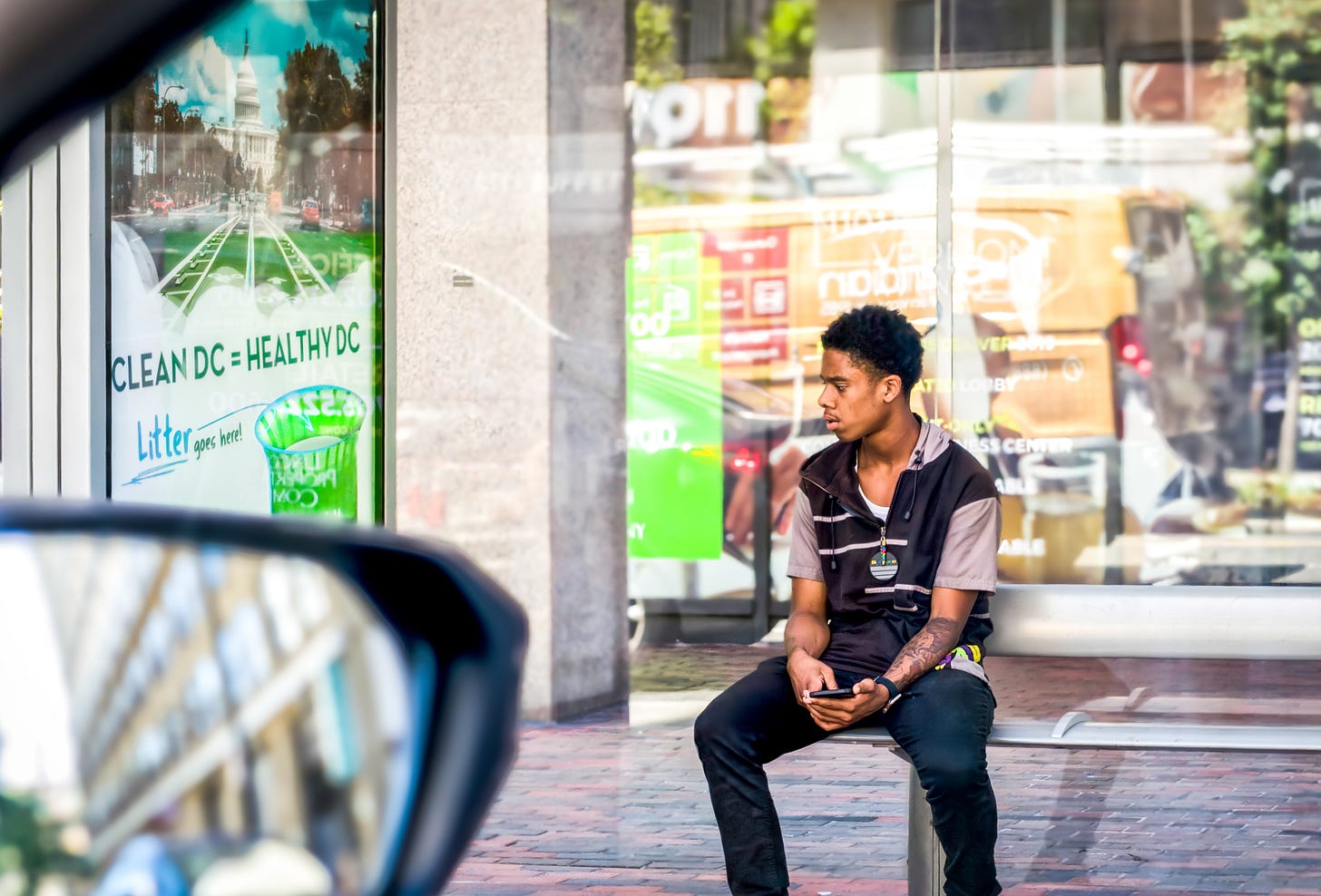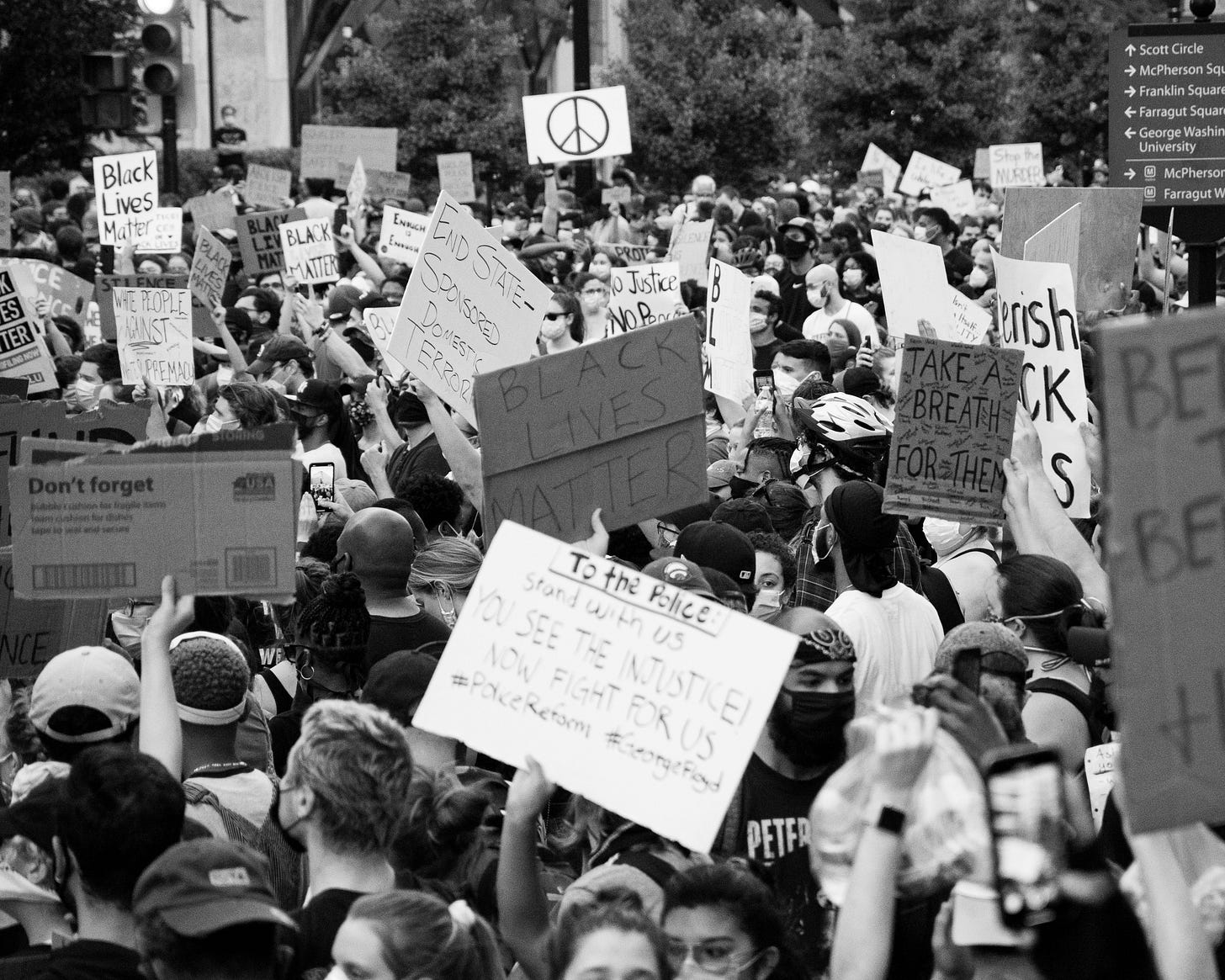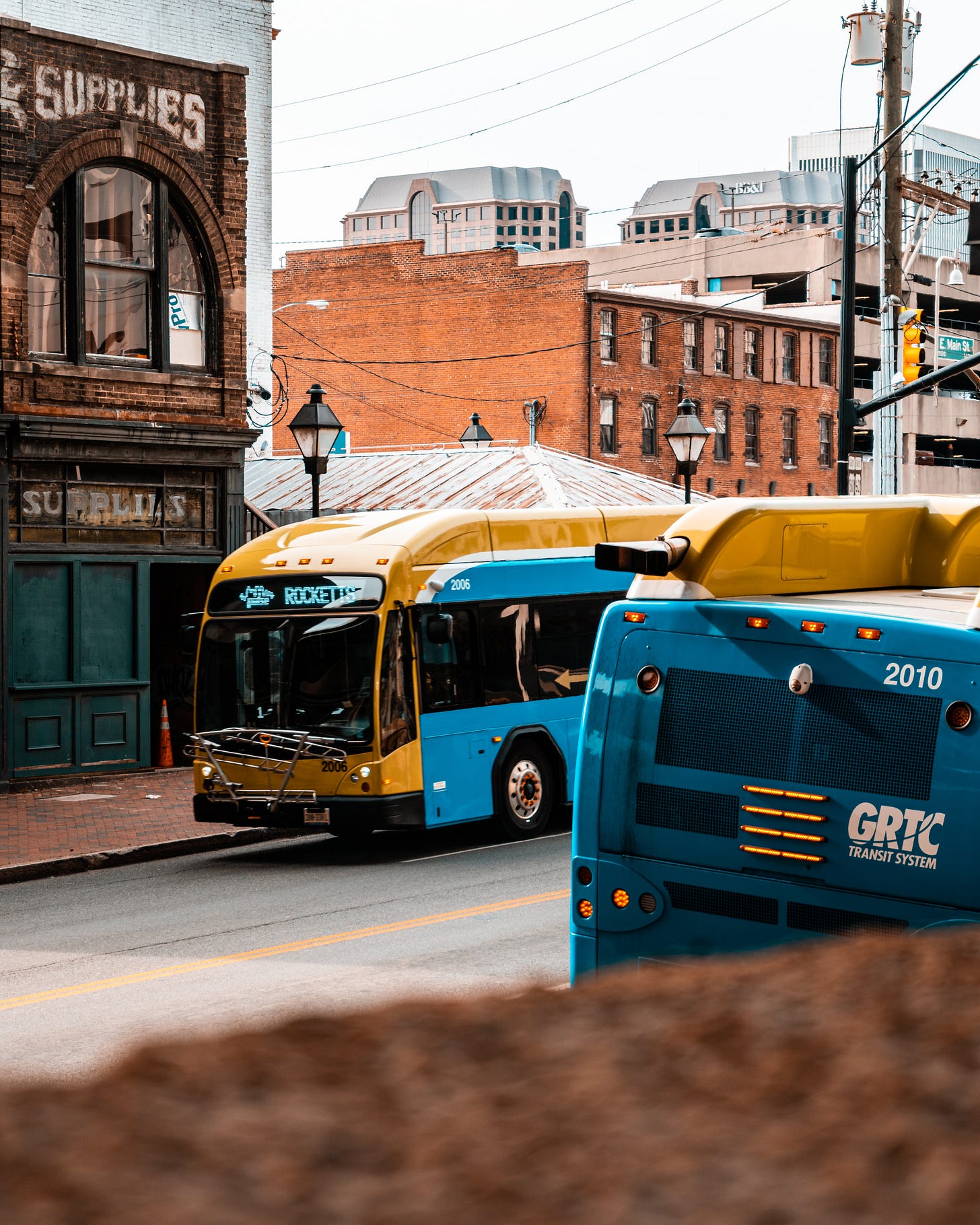Next Stop: Better Buses
Why a Bus Network Redesign? Why Now?
Whether it’s to increase equity, improve efficiency, or aid economic recovery, this is the moment to think critically and creatively about how we can make investments in our bus network that will benefit those who rely on the bus today, and create a better bus system as we recover from the coronavirus pandemic.

Photo by Obi Onyeador on Unsplash
A Bus Network Redesign is a collaborative planning effort to holistically rethink and design a better bus network. Calls for a bus network redesign are not new for our region. In fact, a network redesign was identified as a critical first step in the Bus Transformation Project.
In this special issue of the MetroNow Dispatch, we explore why the conversation about a Bus Network Redesign is all the more urgent.
Why Now?

Photo by Abey Koshy on Unsplash
Today, public transit agencies across the country are facing one of the most daunting financial crises in history. On September 23, the MetroNow Coalition, along with nearly 100 of the region’s elected leaders, business groups, unions, and transit agencies sent a letter to the region’s congressional delegation with an urgent call for emergency federal transit funding.
In many ways, COVID has forced all jurisdictions to rethink transit service. Whether by imagining what a WMATA Lifeline Network could do to mitigate rider risk and increase capacity, or considering the sobering impacts of WMATA budget shortfalls, we’ve already started to reimagine what role public transit should play to create a more resilient region. But if our region’s agencies are not able to secure additional federal funding, they will be forced into a financial crisis redesign. We must start planning now for both eventualities -- with or without federal relief.
Read More:
Redesigning a System by the People, for the People: Alexandria’s Dash Bus Network Redesign (Mass Transit, 2020)
“It’ll be very advantageous for the city as a whole, but especially for our more vulnerable residents [such as] low income, minority and senior residents, [who] will see major increases in access to that highly frequent, highly useful transit.”
Richmond’s Transit Revolution: GRTC Ridership and Accessibility Analysis (Greater Washington Partnership, 2019)
“The transit improvements have been successful in attracting riders and in providing greater access for the Richmond area residents. Ridership across the GRTC system increased 17 percent from July 2018–April 2019, compared to the same period the year before—while transit ridership nationally declined by nearly two percent.”Should We Redesign Our Bus Network? How? (Human Transit, 5.22.10)
“Cities change, and every 20 years or so, the bus network should be comprehensively reviewed. Such a project should really include an exercise where you study the city’s demand patterns and design a network on a “blank slate” i.e. deliberately not considering what your network does now. ”
Increase Equitable Access

Photo by Koshu Kunii on Unsplash
Too often, transportation has been used as a tool to perpetuate systemic racism in the United States. But public transit can also be a vehicle for restorative justice and economic recovery. According to a recent WMATA survey, 70 percent of Metrobus trips during the pandemic were work-related, and 49 percent of surveyed riders identified as African American, 16 percent as Latinx and 10 percent as Asian American-- highlighting the importance of the bus as an essential lifeline and engine for economic prosperity and mobility. Yet we also know the bus system today does not serve riders as well as it could.
Jarrett Walker, a leading transit consultant who works on bus network redesigns around the country, often talks about the ridership - coverage tradeoff: bus systems can concentrate on main lines to create high-quality frequent service and build ridership or they can spread out service so everyone has coverage (or access) to a bus route, but the bus may only come once an hour. A holistic redesign must also factor racial and economic equity into the ridership-coverage tradeoff.
Called for in WMATA’s Bus Transformation Project and MetroNow’s Better Bus Campaign, agencies, advocates, and local leaders can begin to engage the public by asking their constituents, “what would an equitable bus system look like?” By listening to the bus riders using the system today and understanding each jurisdiction’s unique challenges, we can work together to design a bus system that is more convenient, reliable, and prioritizes equitable transportation access for historically marginalized communities. Transit funding shortfalls only make the conversations about prioritizing transit equity more urgent.
Read More:
To tackle pandemic racism, we need to take action, not just take to social media (Tamika Butler, Kinder Rice Institute 9.24.20) “The transit world should want to change what groups of people feel safe on transit. The transit world should want to change who has longer wait times on transit. The transit world should want to change who has access to transit. The transit world should want to change who gets a place to sit and seek shade while waiting for transit. The transit world should want to change public investment in transit.”
What’s it really like to ride the bus while Black? (Greater Greater Washington 8.25.20)
“For a lot of systems around the country, there were situations where bus routes were cut [in response to COVID] and are still cut. And it’s a question of whether or not those are going to be restored….We need more funding for transit, and we do need to specifically earmark and allocate funding toward bus service,” -- Jerome Horne, Rider Experience Specialist at IndyGo‘We’re Desperate’: Transit Cuts Felt Deepest in Low-Income Areas (The New York Times 8.15.20)
“But as service cuts to the United States’ bus, rail and subway systems start to happen, experts say it is the nation’s low-income residents, people of color and essential workers bearing the brunt.”
Improve Transit Efficiency

Photo by Scott Szarapka on Unsplash
Are there any bus lines out there that drive you crazy because they are slow, overcrowded, or seemingly nonsensical in route? Alternatively, have you ever found yourself wishing there was a bus route that would better connect you to certain destinations? A redesign process can help the region prioritize a frequent network of priority bus lines – featuring local and rapid service – that prioritizes the bus on all of the region’s main corridors. This process can create a more efficient bus system both for the rider and transit operator.
Creating more efficient transit -- via route optimization and bus prioritization on key streets -- shortens commute times. When commuting costs less in terms of time, it increases people’s odds of escaping poverty and the likelihood that people will ride in the first place. A redesign can also create an easy to understand hierarchy of routes by concentrating frequency and hours of service to the bus routes with the most demand, and increase connectivity by integrating the bus network with other modes such as Metro, commuter rail, and micro mobility hubs -- optimizing resources.
A more efficient system that increases service for users does not necessarily mean a more expensive system from an operating perspective. With increased access to robust and real time data, a network can be optimized to maximize level of service and streamline operating costs -- a conversation that will be incredibly relevant amidst budget shortfalls that are expected in FY21 and FY22.
Read More:
All transit riders have a choice (Greater Greater Washington, 6.21.17)
“Far from being ‘captive,’ transit riders without cars are in fact very sensitive to the quality of service,” wrote Streetsblog. “So-called ‘captive’ riders have other choices available, like biking, taxis, and borrowing cars, and most do take advantage of them — almost two-thirds of car-free transit riders had done so in the last month.”BaltimoreLink Transit Network Redesign (Foursquare ITP)
“The backbone of the system design was the CityLink network of routes, 12 high-frequency, higher speed, color-coded bus routes to improve travel times, provide more connections to jobs, and increase transfer possibilities to other transit modes.”Design and Implementation of Efficient Transit Networks: Procedure, Case Study and Validity Test (Procedia Social and Behavioral Sciences)
“With good traffic management, the system proposed for Barcelona would both increase the user’s average door-to-door travel speed by about 37% and reduce the bus agency’s total cost by an even greater percentage. These benefit estimates are conservative because our analysis ignored the induced demand the system would attract from users that are currently captive to the automobile.”
Aid Economic Recovery

Photo of Richmond’s GRTC bus system by Derrick Brooks on Unsplash
Public transit, especially the bus, has played an essential role during COVID. While the pandemic has greatly reduced total ridership, data shows that transit has continued to connect people to essential jobs and destinations.
Transportation will play a defining role in both the immediate and long term economic recovery. As businesses start to reopen and more people return to regular commuting patterns, we must be ready with an equitable and safe transit recovery plan. The needs of those who rely on public transportation should be at the forefront of the recovery strategy while also exploring opportunities to implement low-cost, high-impact improvements such as dedicated bus lanes. Improving bus service today will benefit the gradual return to worksites, and the overall competitiveness of the region. Beginning the work to start a regional bus network redesign will position the region to grow smarter, faster, and more equitably in the years to come.
Read More:
Rethinking the Bus: Five Essential Steps for Improving Mobility in the Capital Region (Greater Washington Partnership, September 2018)
“Poor service does little to combat traffic congestion, which costs people both time and money. Unreliable public transportation makes it harder for workers to find jobs and for the region’s employers to recruit talent. This in turn undermines the region’s ability to attract new and expanded businesses.”How Rethinking Space Could Help Us Move Past Coronavirus (Mobility Lab, 5.27.20)
“In addition to reducing the chances of exposure to COVID-19 on a transit vehicle, shorter waiting times and increased headways can facilitate a more effective restoration of society by making transit a more convenient option during the pandemic recovery.”
Subscribe + Share
Sharing is caring! Share the MetroNow Dispatch with any friends, colleagues, or family members who want to join us for the ride!
Follow @MetroNow on Twitter for regular tidbits of transit gold.
Show your support for this conversation by sparking a conversation with neighbors, colleagues, or on social media: What would a better bus network look like? #betterbusdmv #transitequity
Reach out to us directly with any feedback, hot takes, or ideas for future newsletter topics: info@metronow.com

